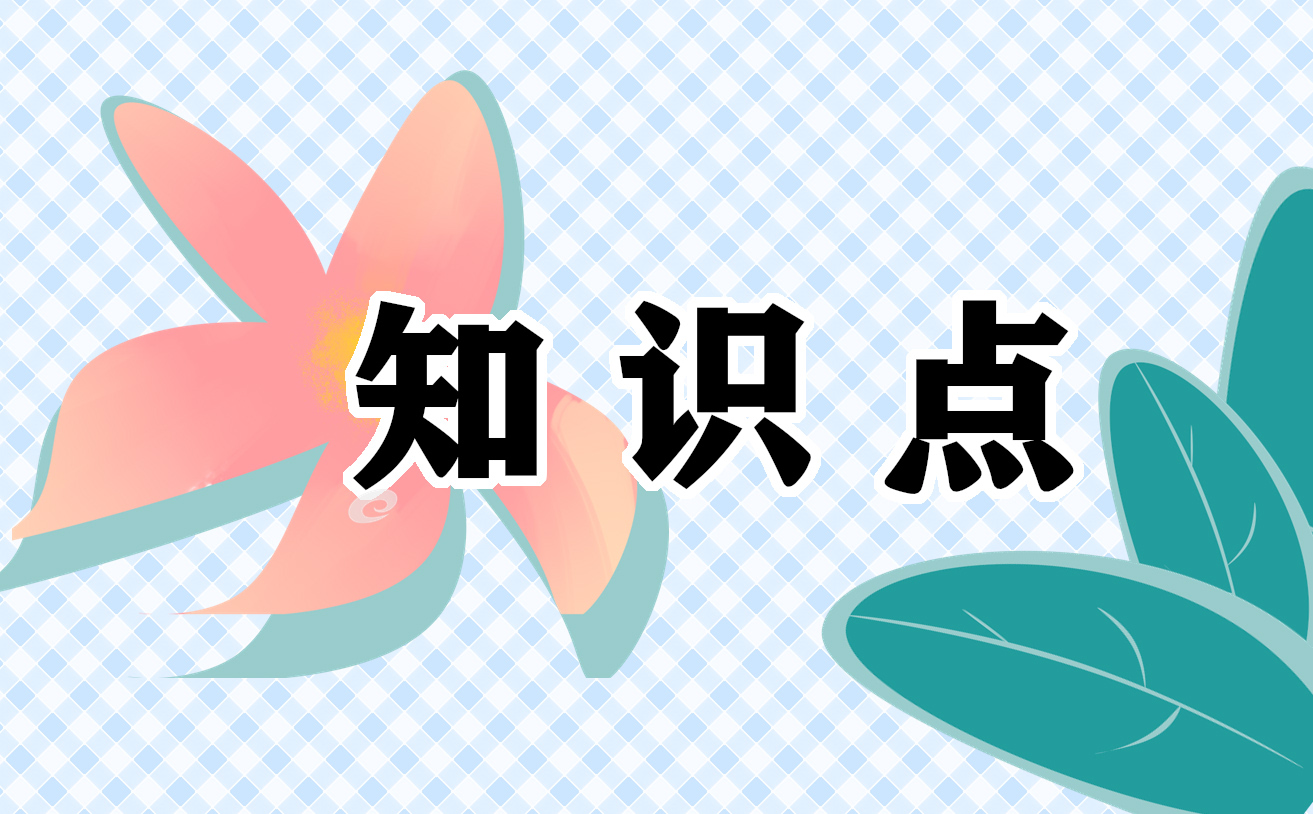关于with的用法总结,你知道多少,快来一起学习吧。下面小编就和大家分享,来欣赏一下吧。
with的用法集合
with是介词,在英语里面的应用非常广泛,为大家总结了一下其用法。
1、表示和、跟、同……一起(行为上的一起)。此类动词搭配很多,如:be with,go with,sit with,stand with,mix with,hang out with,play with,work with,cooperate with,fight with……
I wan to be with you. 我想和你在一起。
Don‘t go with me. It's a long way to go. 别跟我一起去,路程遥远。
I'm not gonna mix with thouse people. 我不打算和那些人搅在一起。
2、表示和、跟、同……一起(吃)或搅拌在一起,常用于食物间的搭配。
Sushi is delicious with mustard. 寿司跟芥末一起吃很美味。
Coffee taste better with milk. 咖啡加牛奶更好喝。
3、do sth. with sb. 与某人一起做某事。
If you want to see a movie with me, you have to listen to me. 如果你想和我看电影,你得听我的。
4、表示用某种工具、方法、手段等。
She is writing with a chalk. 她正在用粉笔写字。
I always go to school with a bike. 我总是骑自行车上学。
5、表示拥有某物,有某种特质、特质等
She is beautiful a girl with blond hair. 她是一个金发美女。
He is a man with hot temper. 他是个暴脾气的人。
6、表示原因或者理由。
With so many housework to do, I won't go out tonight.很多家务要做,我今晚就不出去了。
She jumped up with pleasure.她高兴地跳了起来。
7、表示在……的帮助下:with the help of sb.=with sb's help
I did it with your help.
在你的帮助下我做到啦。
With the help with my friends, I finished my job on time.在朋友的帮助下,我按时完成了工作。
8、表示让步
With all his money, he's yet unhappy.
尽管他有这么多钱,他还是不开心。
With all his efforts, he lost the game.
尽管他这么努力,他还是输了比赛。
9、常用的短语:
agree with sb/sth 同意某人或某事
deal with sth = do with sth 处理某事
fall in love with sb/sth 爱上某人/某物
get on with sb 与某人相处
get on well with sb 与某人相处得好
have nothing to do with sb 与某人无关
compare A with B 将A和B作比较
communicate with sb 与某人交流
……
10、be+形容词+with
be satisfied with 对...满意
be content with sth 对...满足
be angry with sb 生某人的气
be strict with sb 对某人严格
be patient with sb 对某人有耐心
be popular with sb 受某人欢迎
Hope 和 wish有什么差别?
hope的用法
同学们,这个知识点,务必要记住哦,非常重要。
n. v.希望
1⃣️hope to do sth 或者wish to do sth
2⃣️hope+从句;wish+从句(虚拟语气)
3⃣️wish和hope的区别
wish sb. to do sth (✅)
hope sb. to do sth(错误)
————————
4⃣️wish跟的是难以达到的愿望,后面接宾语从句通常用虚拟语气。
如:I wish I were a bird.我希望我是一个小鸟 。
hope用于有可能实现的场合,表达具体的内容。
5⃣️在表示祝愿的时候,用wish。
I wish you happy.我祝你幸福!
————详细解读——————
hope的用法:
1. 从说话语气上看,hope 用于表示可能实现的事情,后接从句时,用陈述语气。如: I hope I shall see him again. 我希望再见他一次。 I hope you haven't hurt yourself. 但愿你没有受伤。
2. 从含义上看,hope 多用于指对好事的盼望、预想;对坏事的预想则多用“I'm afraid...”。如: I hope it will be fine tomorrow. 我希望明天天气好。 I'm afraid it will rain again. 恐怕还要下雨。
3. 从时间上看,hope 所希望的一般指将来或现在的事情,不用于指过去的事情。如: I hope he will come. 我希望他会来。
4. 从句型上看,hope 可用hope to do sth句型,而不能用hope sb to do sth句型。如: I hope to watch the football match again. 我希望再看一次那场足球赛。
而不说:I hope you to go. 最后,当你要表示“希望如此。”时,就说“I hope so.”其否定形式用“I hope not.”。hope 一般不用于进行时。
5. hope后面还可以接that 从句,意为“希望……;能……就好了”。如: She hopes that I will pass the exam. 她希望我能通过考试。
与hope有关的几个词组: in the hope of sth 怀着……的希望 live in hope(s) of 满怀希望
hope for the best 希望获得最好的结果
hope和wish的用法
两词都表示"希望",但在用法上有相同和不同之处,不能随意互换。 一、相同之处
1.都可接不定式作宾语。 We wish to see the film.
The children hope to do something for the old man.
2.都能以某些代词作宾语。
That's what you have wished.
You can't hope much from such people.
3.都能与介词for连用,后接名词或某些不定代词,表示"希望得到""祈求"。
Do you hope for peace?
Do you wish for anything better?
4.都可与过去过完成时连用,表示本来想做而没做成。
I had hoped to come here, but I couldn't.
He had wished to finish it on time, but he didn't.
5.都用于It is / was to be…that的句型中。
It is to be hoped that she will get full marks in English.
It is to be wished that the problem will soon be solved.
二、不同之处
1. wish作为及物动词,可接名词或代词作宾语,hope则不能。 Do you wish a pen or a book?
2. wish能接双宾语表示祝愿,hope则不能。
I wish you success. 。
3. wish能接复合宾语,hope则不能。
I wish you to go with me.
4. wish和hope都能接that引导的从句,但wish后的从句的谓语动词要用虚拟语气(动词用过去时,或过去完成时),hope则用所需要的时态。
I hope that he will win the game.
I wish that I knew the answer.
I wish I had bought it yesterday.
5. hope可与so或not连用,分别代替一个具有肯定和否定意义的宾语从句,以免重复,wish则不能。
-Will it be fine tomorrow? -I hope so.
-Will it rain tomorrow? -I hope not.
三、wish, hope都可作名词,可数或不可数均可,wish表示"愿望""心愿""祝愿",hope表示"希望"。
1. My wish is to become a doctor.
2. It is said that they have realized their wishes. 3. I have no (not much) wish to see him. 4. Send him my best wishes.
5. Where there is life there is hope. 6. There is a hope of success.
7. He has some hope (s) of success.
shall的四大用法
shall 的用法
■1、 在主语是第一、三人称的疑问句中征求对方意见:要不要……?……好吗?如:
Shall I turn on the lights? 我开灯好吗?
Shall he wait for you outside? 要不要他在外面等你?
■2、用于二、三人称, 在陈述句中表示说话者给对方的承诺、决心、警告、威胁等。如:
I shall write to you again at the end of the month. 月底我再给你写封信。
You shall have it back next week. 下星期一定还你。
He shall stay inbed. 他必须躺在床上。
■3、 表示强制,用于法令、条约、规章中,意为“必须,应该”。如:
Candidates shall remain in their seats until all the papers have been collected. 试卷完全收回后,应试人才能离开座位。
■4、 表示不可避免的某事:一定
【初中英语】冠词用法详解
1. 不定冠词的用法
冠词本身不能单独使用,也没有词义,它用在名词的前面,帮助指明名词的含义。英语中的冠词有三种,一种是定冠词,另一种是不定冠词,还有一种是零冠词。
不定冠词a (an)与数词one 同源,是“一个”的意思。a用于辅音音素前,而an则用于元音音素前。
1)表示“一个”,意为one;指某人或某物。例如:
A Mr. Ling is waiting for you. 有位姓凌的先生在等你。
2)代表一类人或物。例如:
A knife is a tool for cutting with. 刀是切割的工具。
Mr. Smith is an engineer. 史密斯先生是工程师。
3)组成词组或成语,如a little / a few / a lot / a type of / a pile / a great many / many a / as a rule / in a hurry / in a minute / in a word / in a short while / after a while / have a cold / have a try /keep an eye on / all of a sudden等。
2. 定冠词的用法
定冠词the与指示代词this,that同源,有“那(这)个”的意思,但意义较弱,可以和一个名词连用,来表示某个或某些特定的人或东西。
1)特指双方都明白的人或物。 例如:
Take the medicine. 把药吃了。
2)上文提到过的人或事。例如:
He bought a house. I’ve been to the house.
他买了幢房子。我去过那幢房子。
3)指世上独一无二的事物,如the sun, the sky, the moon, the earth等。
4)与单数名词连用表示一类事物,如the dollar 美元; the fox 狐狸;或与形容词或分词连用,表示一类人:the rich 富人; the living 生者。
5)用在序数词和形容词最高级及形容词only,very,same等前面。例如:
Where do you live? I live on the second floor. 你住在哪?我住在二层。
That’s the very thing I’ve been looking for. 那正是我要找的东西。
6)与复数名词连用,指整个群体。例如:
They are the teachers of this school. (指全体教师)
They are teachers of this school. (指部分教师)
7)表示所有,相当于物主代词,用在表示身体部位的名词前。例如:
She caught me by the arm. 她抓住了我的手臂。
8)用在某些由普通名词构成的国家名称、机关团体、阶级、等专有名词前。例如:
the People’s Republic of China 中华人民共和国
the United States 美国
9)用在表示乐器的名词之前。
例如:She plays the piano. 她会弹钢琴。
10)用在姓氏的复数名词之前,表示一家人。例如:
the Greens 格林一家人 (或格林夫妇)
11)用在惯用语中。例如:
in the day, in the morning (afternoon,evening), the day after tomorrow, the day before yesterday, the next morning, in the sky (water,field,country), in the dark, in the rain, in the distance, in the middle (of), in the end, on the whole, by the way, go to the theatre
3. 零冠词的用法
1)国名,人名前通常不用定冠词:England,Mary。
2)泛指的复数名词,表示一类人或事物时,可不用定冠词。例如:
They are teachers. 他们是教师。
3)抽象名词表示一般概念时,通常不加冠词。例如:
Failure is the mother of success. 失败乃成功之母。
4)物质名词表示一般概念时,通常不加冠词,当表示特定的意思时,需要加定冠词。例如:
Man cannot live without water. 离开水人就无法生存。
5)在季节、月份、节日、 假日、日期、星期等表示时间的名词之前,不加冠词。例如:
We go to school from Monday to Friday. 我们从星期一到星期五都上课。
6)在称呼或表示官衔,职位的名词前不加冠词。例如:
The guards took the American to General Lee. 士兵们把这个美国人送到李将军那里。
7)在三餐、球类运动和娱乐运动的名称前,不加冠词,如have breakfast,play chess。
8)当两个或两个以上的名词并用时,常省去冠词。例如:
I can’t write without pen or pencil. 没有钢笔和铅笔,我就写不了字。
9)当by 与火车等交通工具连用,表示一种方式时,中间无冠词,如by bus,by train。
10)有些个体名词不用冠词,如school,college,prison,market,hospital,bed,table,class,town,church,court 等个体名词,直接置于介词后,表示该名词的深层含义。例如:
go to hospital 去医院看病
go to the hospital 去医院 (并不是去看病,而是有其他目的)
11)不用冠词的序数词;
a. 序数词前有物主代词时。
b. 序数词作副词。例如:He came first in the race. 他跑步得了第一。
c. 在固定词组中,如at(the)first, first of all, from first to last等。
4. 冠词与形容词+名词结构
1)两个形容词都有冠词,表示两个不同的人或物。例如:
He raises a black and a white cat. 他养了一只黑猫和一只白猫。
The black and the white cats are hers. 这黑猫和白猫都是她的。
2)如后一个形容词无冠词,则指一人或一物。例如:
He raises a black and white cat. 他养了一只花猫。
5. 冠词位置
1)不定冠词位置
不定冠词常位于名词或名词修饰语前。注意:
a. 位于such,what,many,half等形容词之后。例如:
I have never seen such an animal. 我从来没见过这样的动物。
Many a man is fit for the job. 许多人适合这岗位。
b. 当名词前的形容词被副词as, so, too, how, however, enough修饰时,不定冠词应放在形容词之后。例如:
It is as pleasant a day as I have ever spent. 我从未这么高兴过。
so short a time 如此短的时间
too long a distance 距离太远了
c. quite, rather与单数名词连用,冠词放在其后。但当rather, quite 前仍有形容词时,不定冠词放其前后均可,如:rather a cold day/a rather cold day。
d. 在as, though 引导的让步状语从句中,当表语为形容词修饰的名词时,不定冠词放形容词后。例如:
Brave a man though he is,he trembles at the sight of snakes. 他尽管勇敢,可见到蛇还是发抖。
2)定冠词位置
定冠词通常位于名词或名词修饰语前,但放在all, both, double, half, twice, three times等词之后,名词之前。例如:
All the students in the class went out. 班里的所有学生都出去了。
with的详细用法集合
上一篇:worth的用法精析




